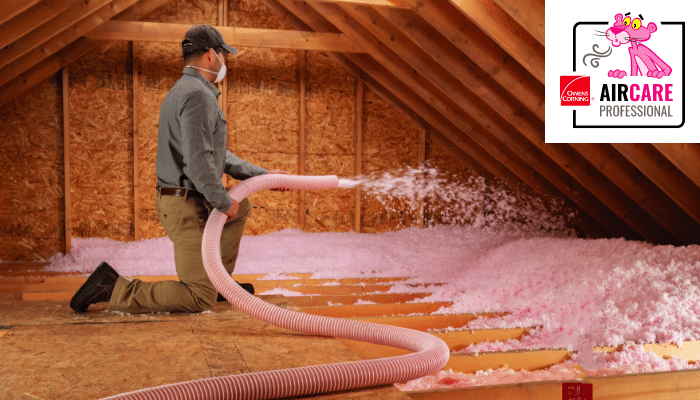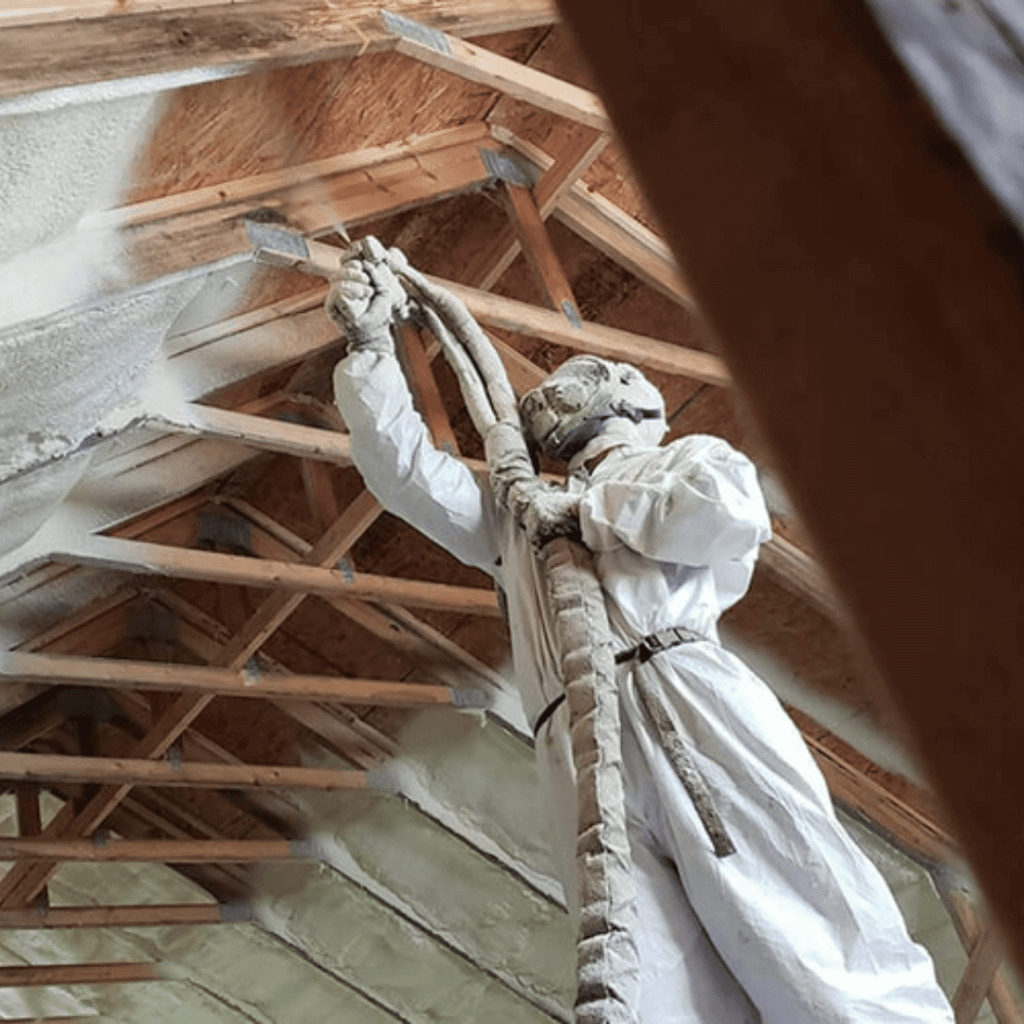Discover the Different Kinds Of Attic Insulation and Their One-of-a-kind Benefits for Your Home's Energy Performance

Fiberglass Insulation
Fiberglass insulation is just one of one of the most generally utilized products for attic room insulation due to its exceptional thermal efficiency and cost-effectiveness. Composed of small glass fibers, this product efficiently catches air, creating a protecting obstacle that aids maintain constant indoor temperature levels. Its high R-value per inch makes it especially effective at standing up to heat transfer, which is important for power conservation in homes.
Installation of fiberglass insulation is fairly simple, usually available in batts or loose-fill forms, fitting different attic room arrangements. Additionally, it is non-combustible and immune to dampness, reducing the risk of mold advancement. This toughness adds to its longevity, making fiberglass a viable long-term investment for property owners.
Furthermore, fiberglass insulation is commonly made from recycled products, which improves its eco-friendliness. The material can likewise add to soundproofing, minimizing noise transfer between areas. While it is important to wear protective equipment throughout installment to stay clear of irritability from the fibers, the total advantages of fiberglass insulation, consisting of energy savings and ecological factors to consider, make it a prominent option for enhancing attic room efficiency and promoting a comfortable living environment.
Spray Foam Insulation
Spray foam insulation is a very reliable choice for attic insulation, recognized for its premium air securing and thermal performance. This cutting-edge insulation material is composed of a combination of isocyanate and polyol material, which, when combined, expands swiftly to fill up gaps and dental caries in the attic room space. Its capacity to abide by various surface areas guarantees a continuous obstacle against air leakages, substantially decreasing warmth loss during colder months and warm gain during warmer periods.
One of the vital advantages of spray foam insulation is its high R-value per inch, which implies it provides exceptional thermal resistance in a reasonably thin application. This is specifically helpful in attics where area is frequently minimal. Furthermore, spray foam can help lessen moisture build-up, reducing the danger of mold and mildew and mildew development, which can be detrimental to both the framework and indoor air top quality.
While the preliminary expense of spray foam insulation may be more than traditional alternatives, its long-lasting power savings, combined with boosted convenience and improved home value, make it a rewarding investment for home owners seeking boosted energy efficiency. Attic Insulation DFW. Generally, spray foam insulation stands out as an efficient option for maximizing attic insulation
Cellulose Insulation

Cellulose insulation is a preferred selection for attic insulation, primarily made up of recycled paper products treated with fire resistants. This ecologically pleasant choice is recognized for its exceptional thermal performance, properly decreasing heat transfer in both summertime and winter season months. The dense make-up of cellulose enables it to fill voids and spaces in recommended you read attic room areas, offering a smooth barrier versus air leakages.
Among the considerable advantages of cellulose insulation is its capacity to withstand mold and mildew and bugs, owing to the fire retardant therapies utilized during production. Furthermore, it flaunts a high R-value per sites inch, which converts into remarkable energy efficiency. Homeowners can expect reduced home heating and cooling expenses as an outcome of boosted insulation.
Installation is normally accomplished with blowing loosened cellulose right into the preferred area, permitting a fast and effective process. This technique likewise decreases disruption to the existing structure. Cellulose insulation has a fairly low environmental effect, as its production process uses recycled materials, adding to sustainable structure techniques.
Rock Woollen Insulation
Amongst the numerous alternatives for attic room insulation, rock woollen, also known as mineral wool, attracts attention due to its outstanding thermal and acoustic performance. Made from recycled or natural materials, rock woollen is created by melting rock and spinning it into fibers, causing an item that supplies superb insulation residential properties.
Among the considerable advantages of rock wool insulation is its high R-value, which shows its performance in standing up to warm flow. This characteristic not just boosts energy efficiency but also adds to maintaining a comfy indoor temperature level year-round. In addition, rock wool is inherently fireproof, making it a more secure choice for homes as it can stand up to heats without melting or releasing poisonous fumes.
Moreover, rock wool insulation excels in soundproofing capacities, successfully decreasing noise transmission in between rooms and from outdoors sources. This makes it a suitable option for property owners seeking a tranquil living setting. In addition, rock woollen is moisture-resistant, assisting to avoid mold growth and preserving the structural stability of the attic space. In general, rock woollen insulation offers a comprehensive option for enhancing power efficiency, security, and convenience in domestic setups.
Radiant Obstacle Insulation
Glowing obstacle insulation works as an effective option for decreasing heat transfer in attics, especially visit this web-site in warmer climates. This kind of insulation jobs by reflecting convected heat away from living areas, therefore reducing the amount of heat that goes into a home during heat - Attic Insulation DFW. Typically made up of a highly reflective material, such as aluminum foil, radiant barriers are installed in attics, dealing with the roofing, where they can obstruct inbound warm from the sun
The main benefit of glowing obstacle insulation is its capacity to reduced air conditioning prices. By mirroring warmth instead than absorbing it, glowing barriers can assist maintain a more stable interior temperature level, lowering the work on a/c systems. This effectiveness equates into lower power costs and raised convenience for home owners.
Along with energy cost savings, glowing obstacles can also add to improved interior air top quality. By minimizing warm accumulation, they help lessen humidity degrees, which can stop mold growth and boost general air circulation. When installed properly, glowing obstacle insulation can be an invaluable enhancement to any energy-efficient home, making it a worthwhile consideration for homeowners wanting to boost their attic insulation strategy.
Verdict
In final thought, understanding the different types of attic insulation-- fiberglass, spray foam, cellulose, rock woollen, and radiant obstacles-- allows house owners to make informed decisions pertaining to power efficiency. By choosing the appropriate insulation material, significant decreases in power expenses can be attained, along with improvements in indoor comfort.

In verdict, understanding the various types of attic room insulation-- fiberglass, spray foam, cellulose, rock wool, and glowing obstacles-- enables home owners to make educated decisions concerning energy efficiency.
Comments on “How Attic Insulation DFW Can Transform Your Home's Climate Control”